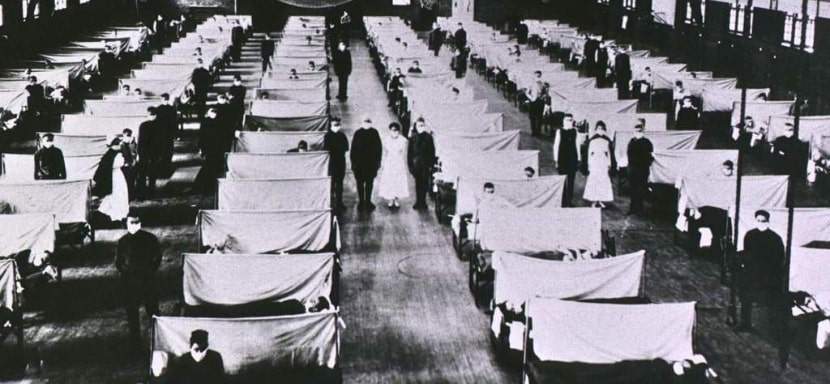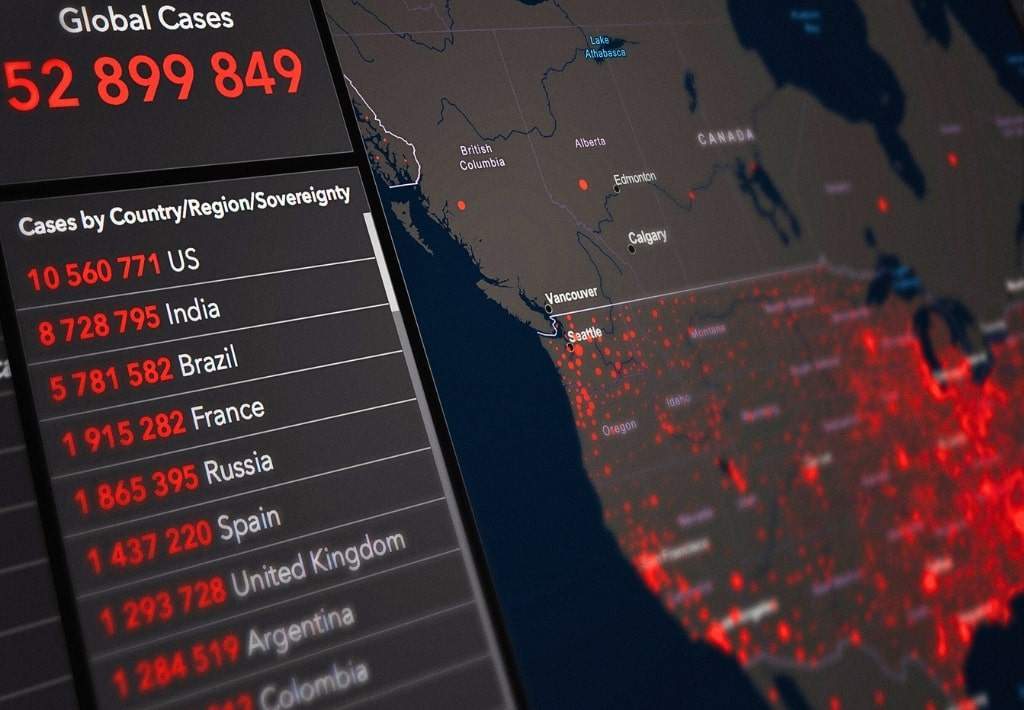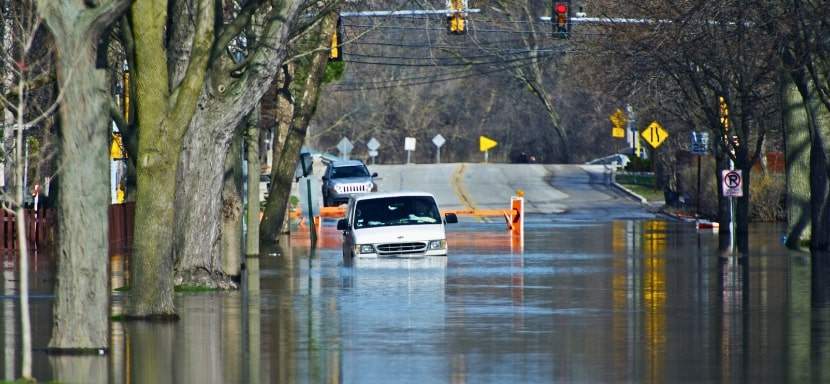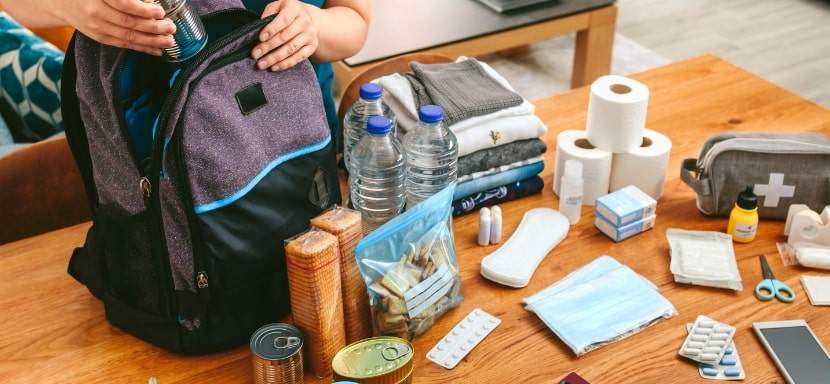How to Survive a Global Pandemic

How to Survive a Global Pandemic
In an era where uncertainty looms, preparing for the inevitable next global pandemic isn’t just wise—it’s imperative.
From the tumultuous spread of COVID-19 to past outbreaks like Ebola, Zika Virus, and MERS, history underscores the urgency of readiness.
As we brace for the possibility of another worldwide crisis, understanding how to navigate and survive such events becomes paramount.
Are you prepared to weather the storm when the next pandemic strikes?
Definition of a Global Pandemic
A global pandemic is an outbreak of a contagious disease that spreads rapidly across multiple countries or continents, affecting a significant portion of the world’s population.
It is characterized by widespread transmission of the infectious agent, resulting in a high number of illnesses and deaths on a global scale.
Global pandemics often require coordinated international efforts to control and mitigate the spread of the disease and provide medical care and support to affected populations.
Understand How Global Pandemics Spread
Global pandemics spread throughout the population primarily by transmitting infectious agents from person to person. The following are standard modes of transmission:
- Respiratory Droplets: When an infected individual coughs, sneezes, or talks, the virus can be expelled into the air. These droplets can land in the mouths, noses, or eyes of people nearby, leading to infection.
- Direct Contact: Close contact with an infected person, such as shaking hands or hugging, can facilitate the transfer of the virus from one person to another. Direct contact with surfaces or objects contaminated with the virus can also lead to transmission if individuals touch their faces afterward.
- Contaminated Surfaces: The virus can survive on surfaces for varying periods, depending on the surface material and environmental conditions. When individuals touch contaminated surfaces and then touch their face, especially their eyes, nose, or mouth, they can introduce the virus into their bodies.
- Asymptomatic Transmission: Some infected individuals may not display symptoms of illness (asymptomatic) but can still transmit the virus to others. This makes identifying and isolating cases challenging, allowing the virus to spread more easily within communities.
- Superspreading Events: Certain situations or events, known as superspreading events, can lead to many infections quickly. Examples include crowded gatherings, such as concerts, religious ceremonies, or indoor settings with poor ventilation, where the virus can spread rapidly among attendees.
Overall, the rapid and widespread transmission of a global pandemic is fueled by these factors, emphasizing the importance of preventive measures such as hand hygiene, wearing masks, practicing social distancing, and vaccination in controlling the spread of infectious diseases.
Global Pandemic Tips and Strategies
Helpful guidance and practical advice for navigating and surviving a worldwide health crisis.
From proactive measures for personal protection to community-wide strategies for containment and resilience, this section equips individuals and communities with the knowledge and tools necessary to effectively prepare for and respond to the challenges posed by a global pandemic.
Stay Healthy
Staying healthy is vital to help fight off infection and disease.
Healthy habits like exercising and getting plenty of sleep will keep your body strong and healthy. Eat nutritious foods, drink plenty of water, manage stress, and keep your mind healthy.
All these tips will help keep you and decrease the chances of the people around you catching a nasty bug.
Did You Know?
The Influenza virus kills upward to half a million people a year around the globe. Many of the fatalities are children.
Importance of Preparedness
By taking these proactive steps to prepare for a global pandemic, individuals can help protect themselves, their families, and their communities from the impact of infectious diseases and ensure their well-being and resilience in challenging times.
- Stay Informed: Stay updated on the latest information and guidelines from reputable sources such as the World Health Organization (WHO) and the Centers for Disease Control and Prevention (CDC). Follow trusted online news sources for accurate and timely updates on the pandemic’s status and recommended precautions.
- Stock Up on Supplies: Build a stockpile of essential supplies, including non-perishable food, water, medications, and hygiene products. Aim to have enough supplies for at least two weeks in case of quarantine or supply chain disruptions.
- Create a Household Emergency Plan: Develop a household emergency plan that outlines how your family will respond to a pandemic. Identify emergency contacts, establish communication channels, and designate a meeting place in case of evacuation.
- Practice Good Hygiene: Emphasize the importance of good hygiene practices, such as frequent handwashing with soap and water for at least 20 seconds, covering coughs and sneezes with a tissue or elbow, and avoiding touching your face with unwashed hands.
- Maintain a Healthy Lifestyle: Prioritize your health by eating a balanced diet, exercising regularly, staying hydrated, and getting enough sleep. A healthy lifestyle can strengthen your immune system and improve your resilience to illness.
- Stay Connected: Stay connected with family, friends, and neighbors, especially those vulnerable or isolated during a pandemic. Check-in on loved ones regularly and offer support and assistance as needed.
- Follow Public Health Guidelines: Adhere to public health guidelines and recommendations, such as wearing masks, practicing social distancing, and avoiding large gatherings. These measures can help slow the spread of the virus and protect yourself and others from infection.
- Prepare Financially: Review your financial situation and consider setting aside emergency funds to cover unexpected expenses during a pandemic. Make arrangements for upcoming bills or financial obligations to ensure stability during challenging times.
- Plan for Remote Work and Learning: If possible, make arrangements for remote work or learning arrangements in case of school or workplace closures during a pandemic. Ensure you can access the necessary technology and resources to work or study from home.
- Seek Support: Contact local community organizations, government agencies, or mental health professionals for support and assistance during a pandemic. Don’t hesitate to ask for help if you feel overwhelmed or anxious.

Pandemic Supplies: Tips on Building a Well-Stocked Emergency Supply Kit
Prepare your home or location before the pandemic spreads. The most essential items needed will be water, food, and medical supplies. Stock enough perishable food and water for you and your family for at least four weeks. If you have the ability and storage space, stock more.
Protection items are also a must. Buy a couple of boxes of 9D5 surgical masks; they will be helpful during an outbreak. Stock up on a few pairs of gloves; the nitrile type will work for people sensitive to latex. You will also want to add goggles to the list. Find the ones that have a coating on them and vents on the side to prevent them from fogging up while being active while wearing them.
Cleaning supplies are also a must. Lysol and chlorine bleach are necessary, so buy plenty of them. A great body protector is Tyvek coveralls; make sure you find the ones with head and foot covers. You will also need some plastic sheeting and duct tape to seal off your windows and doorways for added protection.
Here are some additional tips and guidelines: you can build a well-stocked emergency supply kit to prepare for a global pandemic and ensure the health, safety, and resilience of yourself and your loved ones in times of crisis.
- Assess Your Needs: Begin by assessing your household’s specific needs and preferences. Consider factors such as the number of family members, dietary restrictions, medical conditions, and special requirements for infants, elderly, or pets.
- Create a Checklist: Develop a comprehensive checklist of essential items for your emergency supply kit. This may include food, water, medications, first aid supplies, hygiene products, personal protective equipment (PPE), and other necessities.
- Stock Up on Non-Perishable Food: Choose a variety of non-perishable food items that are easy to store and require minimal preparation. Stock up on canned goods, dried fruits, nuts, grains, pasta, rice, and shelf-stable snacks. Don’t forget to include a manual can opener and disposable utensils.
- Store an Ample Water Supply: Ensure ample clean drinking water for drinking, cooking, and sanitation purposes. Plan to store at least one gallon of water per person daily for at least three days or longer if possible. Consider purchasing bottled water or investing in water purification methods such as water filtration systems or tablets. In a crunch, you can fill up bathtubs, shut off and drain your water heater tank, and even use the water in the back of toilet tanks.
- Include Essential Medications: Stock up on essential medications and medical supplies to last an extended period. This may include prescription medications, over-the-counter medications, medical supplies (e.g., bandages, antiseptics), and medical devices (e.g., thermometers, blood pressure monitors).
- Build a First Aid Kit: Assemble a well-equipped kit containing supplies for treating minor injuries and managing medical emergencies. Include adhesive bandages, gauze pads, adhesive tape, antiseptic wipes, tweezers, scissors, gloves, and a first aid manual.
- Prioritize Hygiene Products: Stock up on hygiene products to maintain cleanliness and prevent the spread of infection. This may include soap, hand sanitizer, disinfectant wipes, tissues, toilet paper, feminine hygiene products, diapers, and trash bags for waste disposal.
- Include Personal Protective Equipment (PPE): Assemble a supply of personal protective equipment (PPE) to protect against respiratory droplets and other modes of transmission. This may include disposable 9D5 face masks, gloves, goggles, and face shields.
- Rotate and Refresh Supplies: Regularly review and refresh your emergency supply kit to ensure that items are not expired or damaged. Regularly rotate perishable items, such as food and medications, to maintain freshness and effectiveness.
- Store Supplies Safely: Store your emergency supply kit in a designated location that is easily accessible and protected from environmental hazards such as moisture, heat, and sunlight. Consider dividing supplies into separate containers or compartments for easy access and organization.
Personal Hygiene is a Must
By adhering to these hygiene practices, you can play a crucial role in preventing the spread of disease during a pandemic and promoting overall public health and safety.
- Frequent Handwashing: Wash hands regularly with soap and water for at least 20 seconds, especially after coughing, sneezing, or touching surfaces in public areas.
- Use Hand Sanitizer: When soap and water are unavailable, use an alcohol-based hand sanitizer with at least 60% alcohol to disinfect your hands.
- Cover Coughs and Sneezes: Use tissues or the inside of the elbow to cover coughs and sneezes to prevent the spread of respiratory droplets.
- Wear Face Masks: Wear a face mask in public settings, especially where social distancing measures are challenging to maintain, to reduce the transmission of respiratory droplets.
- Practice Respiratory Hygiene: Avoid touching the face, nose, mouth, and eyes with unwashed hands to minimize the risk of transferring viruses from surfaces to the body.
- Maintain Physical Distancing: Practice physical distancing by staying at least 6 feet away from others in public spaces to reduce the risk of person-to-person transmission of infectious diseases.
- Clean and Disinfect Surfaces: Regularly clean and disinfect frequently touched surfaces and objects, such as doorknobs, handles, countertops, and electronic devices, using EPA-approved disinfectants.
- Practice Good Respiratory Etiquette: Dispose of used tissues properly and wash hands immediately afterward to prevent the spread of germs.
- Monitor Health Symptoms: Stay vigilant for symptoms of illness such as fever, cough, shortness of breath, and fatigue, and seek medical advice if symptoms develop.
- Stay Informed: Stay informed about updates and guidelines from reputable sources such as public health authorities and follow recommended measures to protect oneself and others from disease transmission.
Social Distancing in Public
By implementing these social distancing strategies, individuals can help reduce transmission rates, flatten the curve of infections, and mitigate the impact of pandemics on public health systems and communities.
- Limit Physical Contact: Avoid close contact with others, including handshakes, hugs, and kisses, to minimize the risk of transmitting or acquiring infectious diseases.
- Maintain Distance: Stay 6 feet from others in public spaces, workplaces, and social gatherings to reduce the spread of respiratory droplets that may contain viruses.
- Work from Home: Whenever possible, work remotely or telecommute to minimize contact with colleagues and reduce the risk of exposure in office settings.
- Use Virtual Communication: Use video conferencing, phone calls, and emails to communicate with friends, family, and colleagues instead of meeting in person.
- Avoid Crowded Places: Stay away from crowded places, such as malls, theaters, restaurants, and public transportation, where social distancing may be challenging to maintain.
- Shop During Off-Peak Hours: Visit grocery stores, pharmacies, and other essential businesses during off-peak hours when there are fewer people to reduce the risk of exposure.
- Opt for Outdoor Activities: Choose outdoor activities such as walking, jogging, or hiking over indoor activities to reduce the risk of transmission in enclosed spaces.
- Use Protective Measures: Wear face masks or cloth face coverings in public settings where social distancing is challenging, such as grocery stores or public transportation.
- Limit Social Gatherings: Avoid large gatherings, parties, and events where social distancing measures may be difficult to enforce, and the risk of transmission is higher.
- Educate Others: Encourage family, friends, and colleagues to practice social distancing and follow public health guidelines to protect themselves and others from infection.

Vaccination is Your Choice
During a global pandemic, vaccination is a personal choice that can significantly impact public health outcomes. Please educate yourself about the available vaccines, their safety, and their effectiveness in preventing the spread of the virus. Do your research, and don’t let anyone pressure you into something you don’t want to do.
Consult with healthcare professionals or trusted sources to make an informed decision based on your health status and risk factors. Consider the benefits of vaccination for yourself and your community by reducing the transmission of the virus and protecting vulnerable populations.
Ultimately, choosing to get vaccinated can play a crucial role in curbing the spread of infectious diseases and contributing to the collective effort to overcome the pandemic.
Designate a Safe Room
You won’t know who is sick and who is not; you’ll want to stay away from people in the outside world. Your best bet is to stay away from them for as long as possible. If someone close to you gets sick, you also want to avoid close contact with them.
Designate a room or area in your home as a sick room. This will be a self-quarantine area where you can house infected people from the healthy ones within your home. You will need to seal off this area with plastic sheeting; this includes doorways and windows. Don’t forget to seal off the heating and air conditioning ducts to prevent the spread of the virus or bacteria from finding its way throughout other areas of the house.
Only one person should be designated to enter the sick room to assist or bring food and water to the infected. This person should be covered head to toe with protective coveralls, a mask, goggles, and gloves. Once the caregiver leaves the room, everything should be immediately disinfected.
The sick room should have its stock of supplies to decrease the spread of bacteria and infection. Fill the room with disposable plates, cups, napkins, tissues, plasticware, etc. After use, these items should be sealed in a heavy-duty trash bag and disposed of immediately. The room itself should be wiped down and disinfected every day.
Remote Work and Learning During a Pandemic
During a global pandemic, transitioning to remote work and online learning can be challenging but essential for maintaining productivity and continuity. Embrace technology tools such as video conferencing, project management software, and virtual learning platforms to stay connected with colleagues and classmates.
Set up a dedicated workspace at home conducive to concentration and focus, and establish a daily routine to maintain structure and productivity. Communicate regularly with supervisors, colleagues, and instructors to stay informed and aligned on tasks and expectations.
Prioritize self-care practices such as regular breaks, exercise, and mindfulness to manage stress and promote well-being while navigating remote work and learning environments. Individuals can successfully navigate remote work and learning during a global pandemic by adapting and embracing new strategies.
Mental Health Support
During a global pandemic, it’s crucial to prioritize mental health and well-being amidst the uncertainty and stress. Seek support from trusted friends, family members, or mental health professionals to share concerns and feelings.
Engage in relaxation techniques such as deep breathing exercises, meditation, or yoga to alleviate stress and anxiety. Stay connected with loved ones through virtual means, such as video calls or messaging apps, to maintain social connections and combat feelings of isolation.
Limit news and social media exposure to avoid information overload and focus on positive activities that bring joy and relaxation. Remember that it’s okay to ask for help when needed, and prioritize self-care practices to nurture mental and emotional resilience during challenging times.
Seek Medical Support
During a global pandemic, knowing when and how to seek medical care is essential if you or a loved one become ill. Monitor symptoms closely, mainly if they include fever, cough, difficulty breathing, or other respiratory symptoms.
If symptoms are mild, consider self-isolation at home and consult with a healthcare provider virtually for guidance on management and monitoring.
For severe symptoms such as difficulty breathing or persistent chest pain, seek medical attention immediately by calling emergency services or going to the nearest hospital. Follow local public health guidelines and recommendations for testing and treatment.
Remember to practice good hygiene and wear a mask if seeking medical care in person to protect yourself and others from potential exposure to the virus.
Pandemic
A pandemic is an epidemic of infectious disease that has spread across a large region; for instance multiple continents, or even worldwide.
Community Support
During a global pandemic, it’s crucial to come together as a community to support and care for one another during times of crisis. Reach out to neighbors, friends, and vulnerable community members to assist with essential tasks such as grocery shopping, medication pickup, or providing emotional support.
Participate in community initiatives and volunteer efforts to help those in need, such as food drives, blood donations, or virtual support groups.
Practice empathy and kindness towards others, and avoid stigmatizing individuals or groups affected by the pandemic. By showing solidarity and compassion, we can strengthen our communities and navigate challenges together.
Risk is Increasing
Just one cough, one touch, one kiss, or even one bite could change not only your life but the lives of your family, friends, and everyone around you, and it could change for months or even years.
In most cases, the closer those people are to you, the greater the risk. But it isn’t always that simple. Many factors are increasing our risk of a global outbreak. Here are just a few:
- Encroaching into new environments – As the numbers of people grow, so does the land needed to house them. Populations expand into previously uninhabited territories, such as forests. With new territories comes contact with new animals and, inevitably, new infections.
- Growing populations and urbanization – The facts around urban living are simple: You live, eat, work, and move closer to people than in any rural setting, and with this comes the more significant opportunity for disease to spread through air, mosquitoes, or unclean water.
- Fewer doctors and nurses in outbreak regions – Beyond weak health systems, countries where outbreaks are more likely to occur — namely, more developing settings — also have fewer doctors and nurses to treat the population. Most have left for better prospects elsewhere.
- Global travel – International tourist arrivals reached nearly 1.5 billion in 2019, as the UN World Tourism Organization reported. This marked an increase of approximately 100 million compared to 2018 and continued a trend of above-average growth for several years. The high volume of travelers presents ample opportunities for spreading infections, highlighting the importance of stringent health and safety measures in the travel and tourism sectors. As we navigate current times, it’s crucial to prioritize public health protocols and implement measures to mitigate the risk of transmitting infectious diseases during travel.
- Personal hygiene – Poor hygiene is not a valid excuse anywhere, even in developing settings, as sterilization and hand-washing are straightforward.
Global Pandemic History
Here is a list of some of the most significant global pandemic events in history:
- The Black Death (1347-1351): This bubonic plague pandemic devastated Europe, Asia, and North Africa, causing millions of deaths and altering the course of history.
- Spanish Flu (1918-1919): This influenza pandemic infected an estimated one-third of the world’s population and resulted in millions of deaths worldwide.
- Asian Flu (1957-1958): Caused by the H2N2 influenza virus, this pandemic originated in East Asia and spread globally, resulting in millions of deaths.
- Hong Kong Flu (1968-1969): This influenza pandemic, caused by the H3N2 virus, originated in Hong Kong and quickly spread worldwide, resulting in significant morbidity and mortality.
- HIV/AIDS Pandemic (1980s-present): Human Immunodeficiency Virus (HIV) and Acquired Immunodeficiency Syndrome (AIDS) have led to a global pandemic that continues to affect millions of people worldwide.
- H1N1 Influenza Pandemic (2009-2010): Also known as the “swine flu,” this pandemic resulted from the H1N1 influenza virus and caused widespread illness and death globally.
- COVID-19 Pandemic (2019-present): Caused by the novel coronavirus SARS-CoV-2, this pandemic has led to millions of infections and deaths worldwide, with significant social, economic, and health impacts.
These events represent some of the most notable pandemics in history, each with significant implications for global health and society.

More Doomsday Scenarios
How to Survive a Worldwide Communications Breakdown
Imagine waking up to silence. Your phone doesn’t buzz, your email won’t load, and even your local…
How to Survive a Worldwide Economic Collapse
When we hear “economic collapse,” it conjures images of chaos, scarcity, and instability. While the…
How to Survive a Robot Uprising
Robots: one minute they’re cleaning our homes or delivering pizza, and the next, they’re plotting…
How to Survive a Totalitarian Regime
In a world where governments control everything from curfews to thoughts, knowing how to…
How to Survive an EMP Attack
Imagine waking up to find your entire world plunged into darkness—no electricity, no functioning…
Recent Survival Posts
How to Survive a Layoff
Layoffs feel personal—even when they’re not. One day, you’re responding to Slack messages and forwarding…
How to Survive a Drug Test
I never imagined I’d be so emotionally invested in a paper cup. But there I was, standing under the fluorescent…
How to Survive an Interrogation
If you’ve ever been caught in the crosshairs of an overly enthusiastic mall cop or stared down by someone…
How to Survive a Nightclub Shooting
Nightclubs pulse with life—lights flashing, music pounding, bodies packed tight on the dance floor. It’s a place to…
How to Survive a Bachelor Party
A bachelor party is a delicate mix of celebration, chaos, and questionable decision-making, wrapped…
More Doomsday Survival Scenarios

How to Survive a Worldwide Economic Collapse
When we hear "economic collapse," it conjures images of chaos, scarcity, and instability. It is one of the doomsday scenarios that could happen in reality, and while the thought can be overwhelming, preparing for such a situation doesn't require an underground bunker...

How to Survive a Robot Uprising
Robots: one minute, they’re cleaning our homes or delivering pizza, and the next, they’re plotting global domination. How did we get here? Somewhere between asking Alexa for the weather and teaching AI to write poetry, we gave machines just enough intelligence to turn...

How to Survive a Totalitarian Regime
In a world where governments control everything from curfews to thoughts, knowing how to survive a totalitarian regime is crucial. History shows us that such regimes crush freedoms, spread fear, and twist truth into propaganda. But don't panic—if people survived in...

How to Survive an EMP Attack
Imagine waking up to find your entire world plunged into darkness—no electricity, functioning vehicles, or communication. This is the terrifying reality of an EMP (electromagnetic pulse) attack. It can strike without warning, and when it does, it affects more than...

How to Survive a Drone Attack
In today's world, the threat of drone attacks is increasingly becoming a reality. These unmanned aerial vehicles (UAVs) are used for surveillance, military operations, and commercial purposes. However, in the wrong hands, they can become tools of destruction....
More Survival Scenarios

How to Survive a Layoff
When the Floor Falls Out: The Reality of a Layoff Layoffs feel personal—even when they're not. One day, you're responding to Slack messages and forwarding emails. Next, you're staring at your monitor as it logs you out... for good. Whether it's a restructuring, a...

How to Survive a Drug Test
The Cup, The Room, The Truth I never imagined I’d be so emotionally invested in a paper cup. But there I was, standing under the fluorescent hum of a strip-mall clinic, trying to recall the last time I ate a poppy seed bagel. That’s the thing about drug tests—they...

How to Survive an Interrogation
If you've ever been caught in the crosshairs of an overly enthusiastic mall cop or stared down by someone in a uniform with a clipboard and a glare, you’ve felt it — the chilly fingers of interrogation anxiety. And while most of us imagine interrogation scenes as...

How to Survive a Nightclub Shooting
Nightclubs pulse with life—lights flashing, music pounding, bodies packed tight on the dance floor. It’s a place to escape, feel the rhythm, and lose yourself in the crowd. But that same energy can turn deadly in seconds, transforming a night of fun into one of the...

How to Survive a Bachelor Party
A bachelor party is a delicate mix of celebration, chaos, and questionable decision-making, wrapped in the noble intention of sending the groom off into married life with a night he’ll (hopefully) remember. It’s a ritual as old as time—well, as old as men deciding...

How to Survive Your First Time at the Gym
Walking into a gym for the first time can feel like stepping into an alien world. The machines hum with purpose, the regulars move confidently, and you’re left standing there, clutching your water bottle, wondering whether you’re in the right place—or on the right...

How to Survive a Worldwide Communications Breakdown
Imagine waking up to silence. Your phone doesn’t buzz, your email won’t load, and even your local radio station crackles with static. A worldwide communications breakdown has hit. What next? For many, this doomsday scenario may sound like the opening lines of a...

How to Survive a Flash Flood While Driving
Surviving a flash flood while driving requires quick thinking, calmness, and a solid plan to ensure your safety. Preparation can make all the difference between a close call and a catastrophe in emergencies like this. This guide provides practical advice to protect...

How to Build an Emergency Kit
Emergencies don’t knock politely at the door. They barge in, uninvited, like a distant relative with a penchant for drama, turning your world upside down without warning. Whether it’s a power outage, a natural disaster, or an unexpected evacuation, the key to staying...

How to Protect Yourself From Insects in the Wild
There’s nothing like being out in the wild—birdsong echoing through the trees, the fresh scent of earth, and a deep sense of peace that makes you think, “Ah, this is what life is about.” But then comes the buzzing. Mosquitoes, ticks, and flies swoop in like uninvited...
